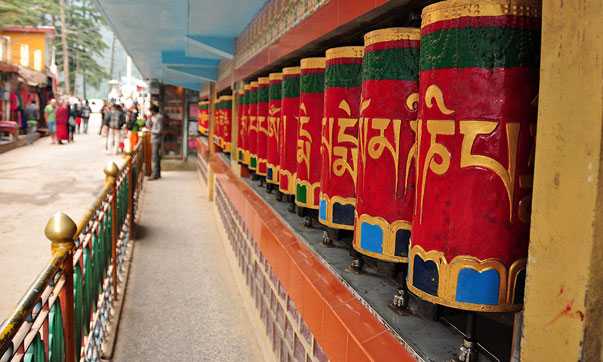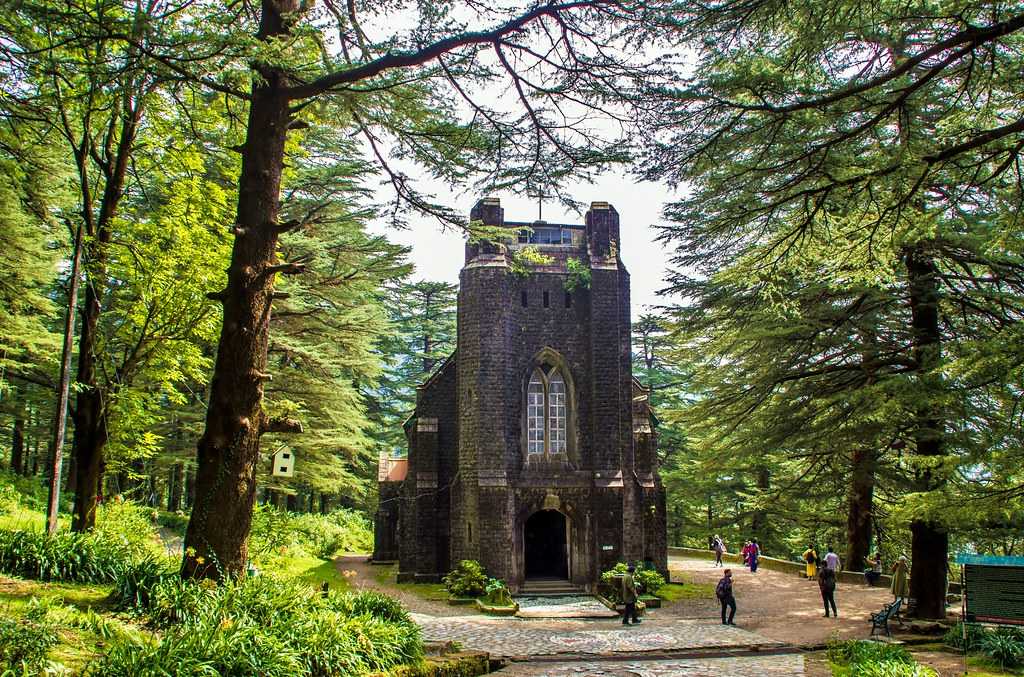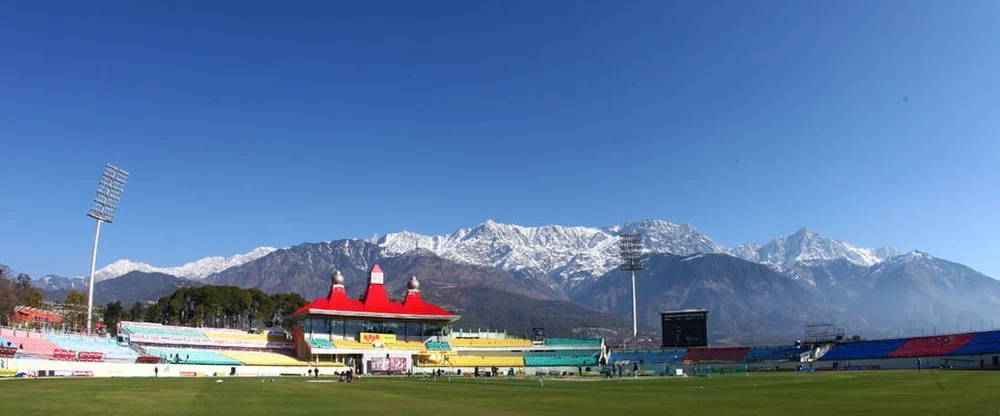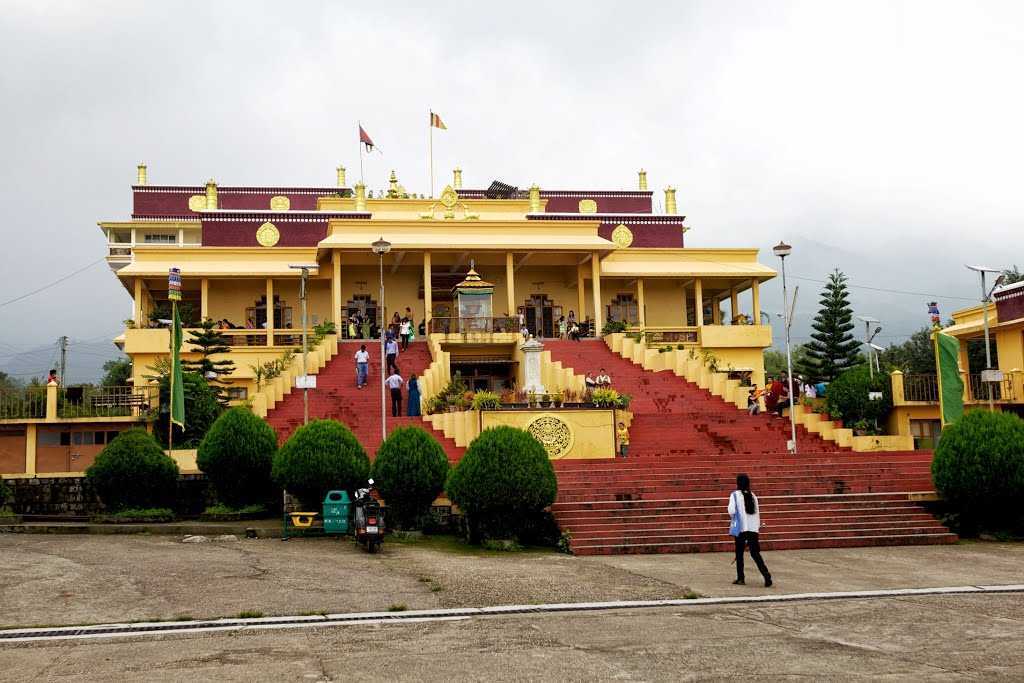Dalai Lama Temple: A Journey into Peace and Spirituality
The Dalai Lama Temple, located in McLeod Ganj, Dharamshala, is a spiritual haven and cultural treasure trove. This detailed guide explores its history, significance, and visitor experience, offering insights into the profound peace and wisdom it imparts to all who visit.

Nestled in the serene town of McLeod Ganj in Dharamshala, India, the Dalai Lama Temple, also known as the Tsuglagkhang Complex, stands as a beacon of Tibetan culture, Buddhism, and spirituality. This sacred site serves as the residence of His Holiness the 14th Dalai Lama and the heart of the Tibetan government-in-exile. This comprehensive guide delves into the temple's history, significance, and what visitors can expect, providing a deep understanding of its spiritual and cultural importance.
Chapter 1: The History of the Dalai Lama Temple
Origins and Establishment
- Exile and Refuge: In 1959, following the Tibetan uprising against Chinese rule, the 14th Dalai Lama fled Tibet and sought asylum in India. McLeod Ganj became the Dalai Lama's new home, and soon after, the Tsuglagkhang Complex was established to serve as his official residence and the center of Tibetan administration.
- Construction and Development: The temple complex was built in the early 1960s, initially to accommodate the Dalai Lama and the Tibetan government-in-exile. Over the years, it has expanded to include various religious, administrative, and cultural facilities, becoming a central hub for Tibetan Buddhism and cultural preservation.
Cultural and Religious Significance
- Spiritual Sanctuary: The Dalai Lama Temple is a place of worship, meditation, and pilgrimage for Buddhists worldwide. It embodies the teachings of compassion, non-violence, and wisdom that the Dalai Lama represents.
- Cultural Preservation: The temple plays a vital role in preserving Tibetan culture and heritage. It hosts numerous religious ceremonies, cultural events, and educational programs that keep Tibetan traditions alive.
Chapter 2: The Architectural Beauty of the Dalai Lama Temple
Main Shrine and Structures
- Shakyamuni Buddha Statue: The temple's main shrine houses an impressive statue of Shakyamuni Buddha, the historical Buddha. Flanked by statues of Avalokitesvara (the Buddha of Compassion) and Padmasambhava (Guru Rinpoche), this shrine is a focal point for prayers and meditation.
- Prayer Wheels: Rows of prayer wheels, inscribed with the mantra "Om Mani Padme Hum," line the temple pathways. Spinning these wheels is believed to release prayers into the universe and bring blessings.
- Thangka Paintings and Murals: The temple walls are adorned with intricate thangka paintings and murals depicting various deities, mandalas, and significant events from the life of the Buddha. These artworks are not only visually stunning but also serve as teaching tools for Buddhist philosophy.
Namgyal Monastery
- Personal Monastery: Adjacent to the main temple is the Namgyal Monastery, the personal monastery of the Dalai Lama. It is one of the most important centers for learning and practicing Tibetan Buddhism.
- Monastic Life: The monastery is home to a community of monks who engage in rigorous study, meditation, and ritual practices. Visitors can observe the monks' daily routines and participate in prayer sessions.
Chapter 3: Spiritual Practices and Daily Rituals
Daily Prayers and Meditation
- Morning and Evening Prayers: Monks and devotees gather for daily prayer sessions, reciting mantras and chanting hymns. These rituals create a serene and reverent atmosphere, conducive to spiritual reflection.
- Meditation Sessions: The temple offers guided meditation sessions for visitors, helping them to cultivate mindfulness, inner peace, and spiritual insight.
Teachings and Public Audiences
- Dalai Lama's Teachings: His Holiness the Dalai Lama frequently gives public teachings at the temple, attracting followers and seekers from around the globe. These sessions offer profound insights into Buddhist philosophy and practical guidance on leading a compassionate life.
- Blessings and Initiations: The Dalai Lama also conducts special ceremonies, including blessings and initiations, which are deeply meaningful for those who participate.
Chapter 4: Visiting the Dalai Lama Temple
Practical Information
- Location: McLeod Ganj, Dharamshala, Himachal Pradesh, India.
- Best Time to Visit: The temple is open year-round, but the best time to visit is during the spring (March to June) and autumn (September to November) months when the weather is pleasant.
- Entry and Timings: The temple is open from early morning until evening. Entry is free, but donations are appreciated.
What to Expect
- Peaceful Environment: The temple exudes a tranquil and peaceful atmosphere, making it an ideal place for meditation and introspection.
- Cultural Immersion: Visitors can immerse themselves in Tibetan culture by observing rituals, participating in prayers, and exploring the nearby Tibetan Museum.
- Interaction with Monks: Engage with the resident monks, learn about their way of life, and gain insights into Buddhist teachings.
Chapter 5: Exploring the Surrounding Attractions
Namgyal Monastery
- Spiritual Learning: The monastery offers a glimpse into the monastic life and rigorous training that monks undergo. Visitors can attend prayer sessions and learn about various aspects of Tibetan Buddhism.
Tibetan Museum
- Cultural and Historical Insights: Located within the Tsuglagkhang Complex, the Tibetan Museum provides a comprehensive history of Tibet, the Tibetan struggle, and the efforts to preserve Tibetan culture.
- Exhibits and Artifacts: The museum houses a range of exhibits, including photographs, documents, and artifacts that chronicle the history and heritage of Tibet.
Bhagsu Waterfall and Bhagsunath Temple
- Natural Beauty: A short drive from McLeod Ganj, Bhagsu Waterfall is a popular destination for nature lovers and hikers. The scenic beauty of the waterfall and the surrounding area offers a refreshing retreat.
- Historical Significance: The nearby Bhagsunath Temple, dedicated to Lord Shiva, is an important pilgrimage site for Hindus and adds to the spiritual ambiance of the region.
Chapter 6: Spiritual Impact and Personal Reflections
Healing and Inner Peace
- A Place of Healing: Many visitors report experiencing a sense of healing and inner peace after spending time at the Dalai Lama Temple. The serene environment and spiritual practices foster a deep sense of well-being.
- Mindfulness and Meditation: The temple offers an ideal setting for mindfulness and meditation, helping visitors to cultivate a calm and focused mind.
Inspiration and Learning
- Teachings of Compassion: The teachings and presence of the Dalai Lama inspire visitors to embrace compassion, kindness, and non-violence in their own lives.
- Wisdom and Insight: The temple serves as a center for learning and spiritual growth, offering valuable insights into Buddhist philosophy and practices.
Chapter 7: Planning Your Visit
Accommodations
- Hotels and Guesthouses: McLeod Ganj offers a range of accommodations, from budget guesthouses to luxurious hotels. Many establishments provide stunning views of the Himalayas and easy access to the temple.
- Monastic Guesthouses: For a more immersive experience, consider staying at one of the monastic guesthouses, which offer simple but comfortable lodging and an opportunity to participate in monastic activities.
Transportation
- Getting There: Dharamshala is well-connected by air, rail, and road. The nearest airport is Kangra Airport (Gaggal), about 15 kilometers from McLeod Ganj. Regular buses and taxis are available from major cities.
- Local Transport: Within McLeod Ganj, auto-rickshaws, taxis, and walking are the most common modes of transport.
Chapter 8: Engaging with the Tibetan Community
Volunteering Opportunities
- Cultural Exchange: Many organizations offer volunteer opportunities, allowing visitors to contribute to the local community while learning about Tibetan culture and traditions.
- Educational Programs: Volunteer to teach English, computer skills, or other subjects to Tibetan refugees and children, fostering mutual learning and cultural exchange.
Supporting Local Businesses
- Handicrafts and Souvenirs: Purchase traditional Tibetan handicrafts, thangka paintings, and souvenirs from local shops to support the Tibetan community and take home a piece of their rich heritage.
- Local Cuisine: Enjoy authentic Tibetan cuisine at local restaurants and cafes, savoring dishes like momos, thukpa, and butter tea.
Chapter 9: Reflections and Takeaways
Spiritual Growth
- Personal Transformation: A visit to the Dalai Lama Temple can be a transformative experience, encouraging visitors to reflect on their values, beliefs, and purpose in life.
- Continued Practice: The lessons and insights gained from the temple can inspire ongoing spiritual practice and personal growth long after the visit.
Global Understanding
- Cultural Awareness: The temple fosters a deeper understanding of Tibetan culture, history, and the ongoing struggle for Tibetan autonomy.
- Global Compassion: The message of compassion and non-violence promoted by the Dalai Lama resonates globally, encouraging visitors to contribute to a more peaceful and compassionate world.
Conclusion
The Dalai Lama Temple is more than just a religious site; it is a symbol of peace, resilience, and the enduring spirit of the Tibetan people. Whether you are a spiritual seeker, a cultural enthusiast, or a curious traveler, a visit to this temple offers a profound and enriching experience. Embrace the tranquility, learn from the teachings, and carry the message of compassion and wisdom with you.
FAQs
What is the Dalai Lama Temple?
- The Dalai Lama Temple, also known as the Tsuglagkhang Complex, is a spiritual and cultural center in McLeod Ganj, Dharamshala, serving as the residence of the 14th Dalai Lama and the heart of Tibetan Buddhism in exile.
Where is the Dalai Lama Temple located?
- The temple is located in McLeod Ganj, a suburb of Dharamshala in Himachal Pradesh, India.
What are the main attractions at the Dalai Lama Temple?
- The main attractions include the Shakyamuni Buddha statue, prayer wheels, thangka paintings, the Namgyal Monastery, and the Tibetan Museum.
Can visitors attend teachings by the Dalai Lama?
- Yes, visitors can attend public teachings and blessings by the Dalai Lama, which are announced in advance and draw large crowds.
Is there an entry fee for the Dalai Lama Temple?
- Entry to the temple is free, but donations are welcome to support the upkeep and activities of the complex.
What is the best time to visit the Dalai Lama Temple?
- The best time to visit is during the spring (March to June) and autumn (September to November) when the weather is pleasant.
Are there meditation sessions available for visitors?
- Yes, the temple offers guided meditation sessions for visitors, helping them to cultivate mindfulness and inner peace.
What other attractions are nearby the Dalai Lama Temple?
- Nearby attractions include the Namgyal Monastery, Tibetan Museum, Bhagsu Waterfall, and Bhagsunath Temple.
How can visitors support the Tibetan community?
- Visitors can support the Tibetan community by purchasing handmade crafts, dining at local Tibetan restaurants, and participating in volunteer programs.
What should visitors expect during their visit to the Dalai Lama Temple?
- Visitors can expect a peaceful and serene environment, opportunities for spiritual practice, cultural immersion, and interactions with the local Tibetan community.
What is the Dalai Lama Temple?
- The Dalai Lama Temple, also known as the Tsuglagkhang Complex, is a spiritual and cultural center in McLeod Ganj, Dharamshala, serving as the residence of the 14th Dalai Lama and the heart of Tibetan Buddhism in exile.
Where is the Dalai Lama Temple located?
- The temple is located in McLeod Ganj, a suburb of Dharamshala in Himachal Pradesh, India.
What are the main attractions at the Dalai Lama Temple?
- The main attractions include the Shakyamuni Buddha statue, prayer wheels, thangka paintings, the Namgyal Monastery, and the Tibetan Museum.
Can visitors attend teachings by the Dalai Lama?
- Yes, visitors can attend public teachings and blessings by the Dalai Lama, which are announced in advance and draw large crowds.
Is there an entry fee for the Dalai Lama Temple?
- Entry to the temple is free, but donations are welcome to support the upkeep and activities of the complex.
What is the best time to visit the Dalai Lama Temple?
- The best time to visit is during the spring (March to June) and autumn (September to November) when the weather is pleasant.
Are there meditation sessions available for visitors?
- Yes, the temple offers guided meditation sessions for visitors, helping them to cultivate mindfulness and inner peace.
What other attractions are nearby the Dalai Lama Temple?
- Nearby attractions include the Namgyal Monastery, Tibetan Museum, Bhagsu Waterfall, and Bhagsunath Temple.
How can visitors support the Tibetan community?
- Visitors can support the Tibetan community by purchasing handmade crafts, dining at local Tibetan restaurants, and participating in volunteer programs.
What should visitors expect during their visit to the Dalai Lama Temple?
- Visitors can expect a peaceful and serene environment, opportunities for spiritual practice, cultural immersion, and interactions with the local Tibetan community.




